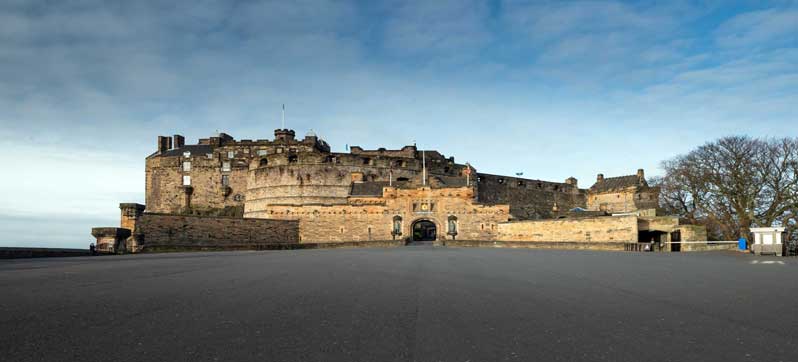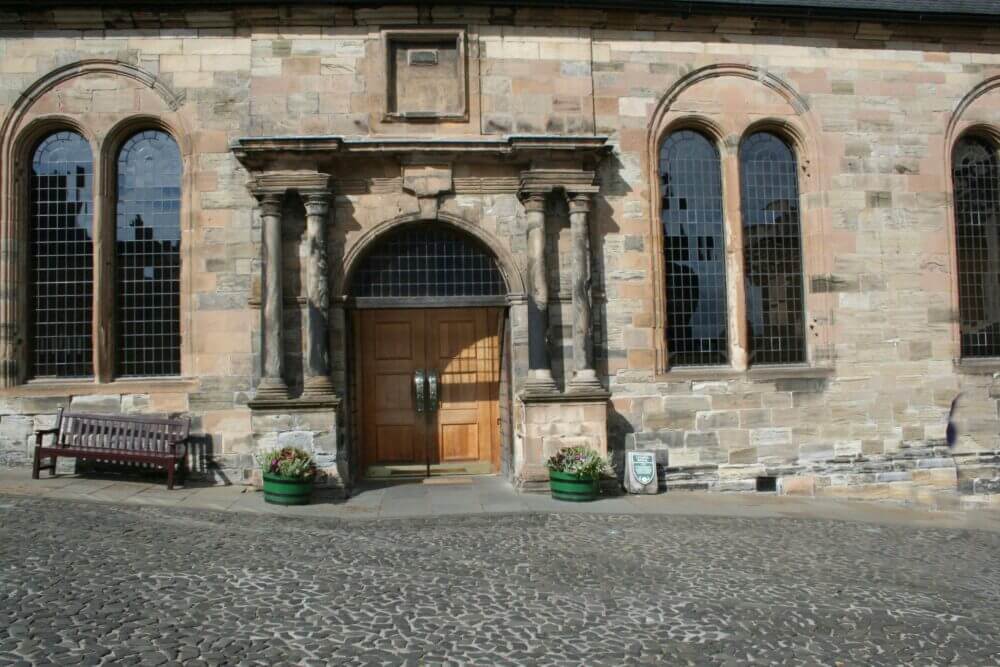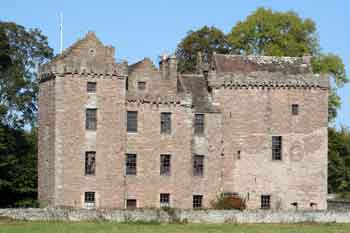James VI and I was king of Scotland, England and Ireland and lived from 1566 to 1625.

He was born in Edinburgh Castle on 19 June 1566 the only son of Mary Queen of Scots and Henry Stewart, Lord Darnley.
On 17 December he was baptised a Catholic in Stirling Castle’s Chapel Royal and given the names Charles after his godfather Charles IX of France and James the traditional name of Stewart (Stuart) kings.
Church of the Holy Rude in Stirling
On 29 July 1567, with his father murdered and his mother a prisoner in Lochleven Castle and forced to abdicate, the infant was, crowned king JamesVI of Scotland at the Church of the Holy Rude in Stirling.
In her authoritative biography Mary Queen of Scots, Antonia Fraser noted, “Once more the Scottish crown was in the grasp of a puny child hedged round by grasping nobility…”
His age at accession wasn’t unusual in Scotland, for every monarch since 1406 had come to the throne as a minor. For much of that minority, Scotland was governed by the Regent, the fourth Earl of Morton.
From the age of four, James VI received his education from a number of tutors among them the stern, perhaps brutal, tutor George Buchanan who wasn’t afraid to beat his young charge.
Under Buchanan’s watchful eye James learned about Literature, history, and philosophy. It was a classical education.
Antonia Fraser talks in some depth about the king’s early years. In particular, his relationship with the French nobleman, his cousin Esmé Stuart (later Earl of Lennox) who may have stirred homosexual feelings in the young man.
Earl of Gowrie
Lennox was hated by Scottish nobles as a man who enjoyed too much of the kings favour.
In particular, William Ruthven, the first Earl of Gowrie was worried as was England’s Elizabeth I after Lennox was implicated in a Spanish plot to remove her, free Mary Queen of Scots and place her on the throne of England.
Although Lennox denied he was a “deviser of the erecting of papistrie” the die was cast.

Huntingtower Castle
With the support of the Earls of Angus and Glencairn, Ruthven seized the opportunity to lure James to Ruthven Castle, today Huntingtower Castle, where he was held captive.
The Scottish Kirk labelled the event “the late action of the Reformation.”
For ten months the king remained there before being rescued. The events of 23 August 1582 were a 16th century coup d’état now better known as the Ruthven Raid.
In 1600, in a rather murky affair, James survived an attempt on his life by John Ruthven, the third Earl of Gowrie.
In 1583, at the age of 17, James had taken the reins of power and within three years he had negotiated a treaty with Queen Elizabeth. The following year his mother was executed by Elizabeth at Fotheringhay Castle.
Although James did formally protest about the death of his mother, he was well aware that his chances of inheriting the English throne were now greatly enhanced.
And so it was, on the death of Elizabeth I on 24 March 1603, James, as a direct descendant of Henry VII, took the throne of England. Crowned with him was his wife Anne, daughter of Frederick II of Denmark.
The couple had been married in 1589 and by the time of the coronation, Anne was the mother of six of the eight children she was to bear.

However despite his marriage James, throughout his reign, cultivated a number of close male ‘friendships’, a practice which angered many of the members of parliament.
Indeed James would prove to be grossly extravagant and spent a considerable amount of time trying to raise money from both parliament and other sources.
The new king was quick to put an end to England’s long-running war with Spain but a continuing religious conflict threatened to come to a head as the Puritans pushed for the total abolition of Catholic rites in church services.
Gunpowder Plot
On 5 November 1605, the Gunpowder Plot was foiled. It was Guy Fawkes and other Catholic extremists who tried to blow up James as he attended the state opening of parliament.
As a result James introduced new penalties against Catholic worship.
The king’s foreign policy was often chaotic and although he purported to be a ‘Prince of Peace’ he was forced into another war with Spain and into hiring a mercenary army to fight against the Holy Roman Emperor.
He only returned to Scotland on one occasion, in 1617. However, he was fond of boasting that he could now rule his northern kingdom with the stroke of a pen.
King James version of the Bible
He was a patron of the arts, employing the architect Inigo Jones to build the current Banqueting House in London.
As an able theologian, he ordered a new translation of the Bible, now known as the Authorised King James Version of the Bible.
Antonia Fraser said of James VI, “he was a highly intelligent ruler who did not provoke his leading subjects too far and was ready to withdraw unpopular policies.”
Five Articles of Perth
Indeed a good example of this was the non-enforcement of the Five Articles of Perth (1618) a policy that sought to bring the running of the Church of Scotland into line with that of England. Unsurprisingly that did not go down well in Scotland.
Son and heir Charles I
It seems that before he died on 27 March 1625, James VI of Scotland and James I of England tried to warn his son and heir Charles I about the growing authority of the House of Commons. It was a warning that history now reveals as having fallen on deaf ears.
The British Royal Family – more information
If your interest in British royalty goes beyond Scotland’s earliest kings and queens, see the official British Monarchy website for lots of additional information.